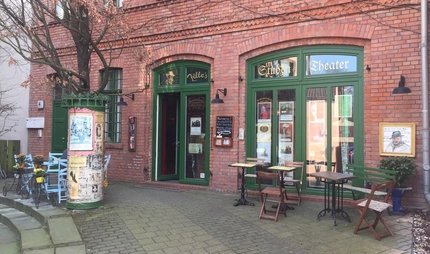
Rathaus Köpenick
How a hoax made the town hall famous
The story of the phoney captain of Köpenick is famous. See for yourself the scene of the masquerade – Rathaus Köpenick
Please note: The current opening and closing hours and special hygiene rules for the Covid-19 are available on this website.
It was a shoemaker who made Köpenick’s town hall famous. The exhibitions there tell the story of the famous incident in the 20th century and the history of the administrative building. The imposing town hall is in the Treptow-Köpenick borough in the far south-east of Berlin. Even today, it’s still a popular subject for photographs.
The construction of Rathaus Köpenick
The town hall was built in the Brick Gothic style by Hugo Kinzer and Hans Schütte, starting in 1901. The new building was supposed to cost 350,000 marks, but in fact it ran to around 632,000 marks, proving that badly underestimated costs are not just a modern phenomenon. In 1905, Köpenick’s prestige building, with its 54-metre-high tower, was officially opened. Köpenick was not incorporated into Berlin until 1920. The magnificent staircase and the large heraldic room in the Rathaus make it one of Berlin’s most attractive town hall buildings.
The phoney Captain of Köpenick
In 1906, the Rathaus was the scene of a confidence trick that has since become legendary. The main figure was an unemployed cobbler called Wilhelm Voigt, while the best known member of the supporting cast was the Mayor of Köpenick, Dr. Georg Langerhans. The 57-year-old cobbler played a very special trick to lighten the town coffers. To do it, he went to a flea market and spent the last of his money on a captain’s uniform. In October, he tricked some soldiers into believing he was a real captain and set off to the town hall, where he promptly arrested the mayor and had him sent to the Neue Wache guardhouse in Berlin. He then demanded 3,557 marks from the city coffers in return for a receipt. he was finally caught and sentenced 10 days later.
The hoax went down in history, and was the inspiration for Carl Zuckermeyer’s comedy The Captain of Köpenick. Theatre and film adaptations made the whole world laugh and the town hall famous. A bronze statue and a plaque on town hall recall the caper today.
Exhibitions and events in the Rathaus Köpenick
In the town hall itself you can see the exhibition The Captain of Köpenick with exhibits including Voigt’s uniform and the legendary safe where the town coffers were kept. Another exhibition covers the history and architecture of the Neo-Gothic building.



